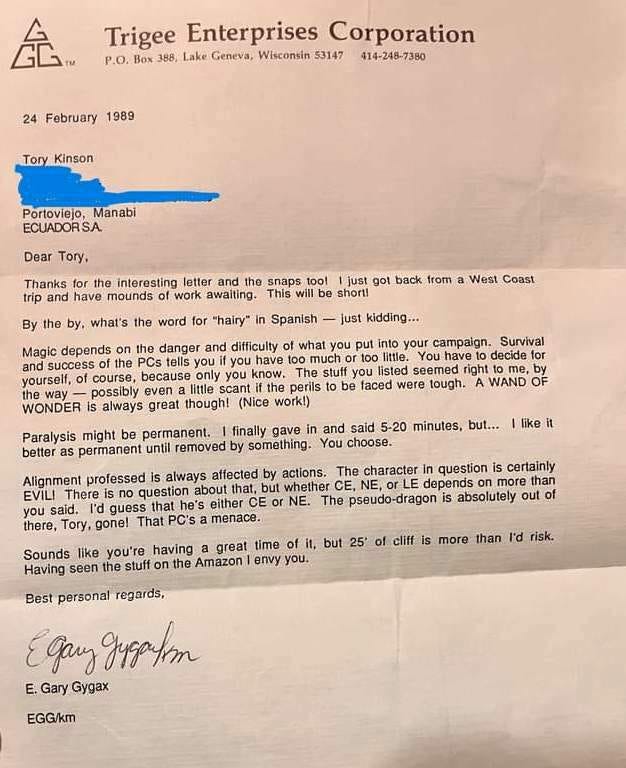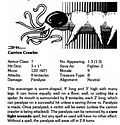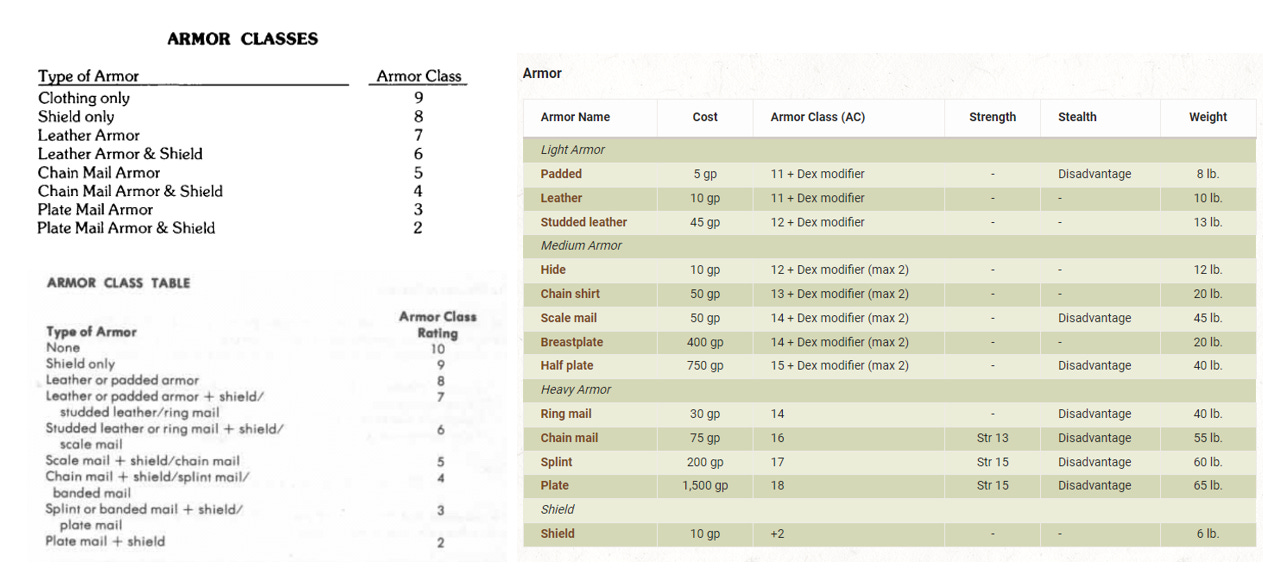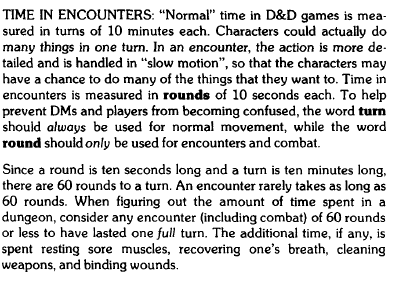Permanent Paralysis in D&D?
Gygax answers a fan's letter and I geek out on Moldvay Cook Basic.
So a Carrion Crawler’s damage is, “You will be eaten.”
There is a lot of talk about how cruel older versions of D&D could be to player characters. From personal experience, I can tell you that the level of lethality when it came to lo level player characters was extremely high and when I try to think of the perfect example of how hard life was as a first level character I immediately think of the Carrion Crawler in the Moldvay Basic Rulebook.
Take a look at that stat line for a minute. It doesn’t look so bad. The Armor Class is only 7 which means that the creature is relatively easy for a 1st through 3rd level character to hit even without a Strength bonus. As you can see from the combat table in the Moldvay Basic Set, a character of that level hits on a 12 or better.
If you are used to 3rd Edition and Later D&D, or only the AD&D versions of the game, you might wonder at the armor class value starting at 9 instead of 10. That’s different from both modern, and one track of the older rules, representation of Armor Class. One way to look at it is that a 7 Armor Class in Moldvay Basic is the equivalent of a 12 Armor Class in Modern D&D and an Armor Class of 8 in AD&D. That’s not exactly correct though. While the representation of a 9 Armor Class (no armor) in AD&D does correspond with an AC of 10 (no armor) in AD&D and 5th edition, the connection between Armor Class and equivalent armor type changes later on.
Looking at the image above, you can see that comparing Basic to AD&D that Basic ACs 9 to 6 correspond to AD&D ACs of 10 to 7, but then they align at Chainmail where both give characters an AC of 5 and that alignment continues to Plate Mail and Shield. You’ll also notice if you look at the 5th edition chart in the same image that the AC equivalents never align between these editions in any meaningful way. Armor in 5th Edition is scaled differently, and I’m not talking about the “increasing vs. decreasing.” I mean that Leather Armor only provides 1 point (-5%) of protection in 5th Edition where it provides 2 points of protection (-10%) in both D&D and AD&D.
So looking at equivalent protection values only gets us so far and that’s where another framing comes to mind, and it’s a surprising one given the lethality of D&D games for low level characters. In AD&D, even fighters need a 20 to hit Armor Class 0 where in D&D all character classes hit an Armor Class 0 on a roll of 19. That means, and you might be seeing where I’m heading here, that D&D characters are technically more capable than their AD&D equivalent.
Given that AD&D Fighters and Thieves tend to have more hit points than their D&D counterparts, this might seem counterintuitive. However, when it comes to their ability to hit foes D&D characters are more competent by a full 5% step. This relative capability should mean that our adventuring team has nothing to fear from the Carrion Crawler right? After all, even our lowly Thief has a 40% chance of hitting the beast and that’s even better if the Thief was in hiding.
Okay, so we know that it’s not hard to hit the Carrion Crawler, but how much damage can it take? To show this, I’m going to do a quick and dirty damage simulation using R. The simulation file is at this link, just copy and paste.
It has 3+1 Hit Dice, meaning that it averages 14.5 hit points. A party consisting of a Fighter (1d8 damage, 4.5 average roll, and average damage of 2.02 per round), Thief (1d6 damage, 3.5 average roll, and average damage of 1.58 per round), a Cleric who does the same damage as the Thief, and a Magic User (1d4 damage, 2.5 average roll, and average damage of 1.13 per round). Assuming two fighters, one thief, one cleric, and one mage, and assuming the party wins initiative the party would do about 8.13 points of damage a round. That means that unless the Carrion Crawler hits everyone, it will likely die in 2 to 3 rounds of combat.
Our heroes stand a chance! Or do they?
How many attacks does the Crawler get again? EIGHT?!
And how much damage do they do? Paralysis and… let’s look at that picture again. Does that say, “Once paralyzed, a victim will be eaten?” Yep.
So a Carrion Crawler’s damage is, “You will be eaten.”
That’s pretty severe and the paralysis lasts 2-8 TURNS (a turn is 60 rounds), so that’s a heckuva long time. We’re talking being paralyzed for 20 to 80 minutes while your party will probably not last that long.
Thank heaven that paralysis is removable by Cure Light Wounds (another way characters in D&D Basic are more powerful than AD&D characters who need the 3rd level spell Remove Paralysis) and “only” lasts 2-8 turns.
But what if Gary Gygax had intended Paralysis to last indefinitely? How harsh a world would this represent?
Based on a letter shared with an AD&D Group on Facebook and shared by Zenopus Archives (image below) from Tory Kinson, it appears that Gary Gygax might very well have wanted Paralysis to be permanent unless removed.

Permanent Paralysis is a factor that could have serious effect on a campaign and as Zenopus Archives show in their post on permanent paralysis, it took a while for Gary Gygax and crew to settle on a “reasonable” time and cure for paralysis.
When the damage a creature does is “You Will Be Eaten,” paralysis is a real killer.
Check out Zenopus’s analysis and then let me know what you think about permanent paralysis.









I miss old 2E. Good stuff especially if you really read into each monster's abilities. A casual encounter in 2E had the chance of even messing up the strongest of parties for sure.
I'm reminded of the, Living Wall, good way to get destroyed quickly.
I don’t think I have much of an issue with the permanence of paralysis until action X is carried out, but it could require the concept of paralysis to be defined with more granularity. Some forms of paralysis might include an inability to breath, others a lack of the swallow reflex. The only question then is whether death is by asphyxia in a few minutes or thirst or starvation over days.